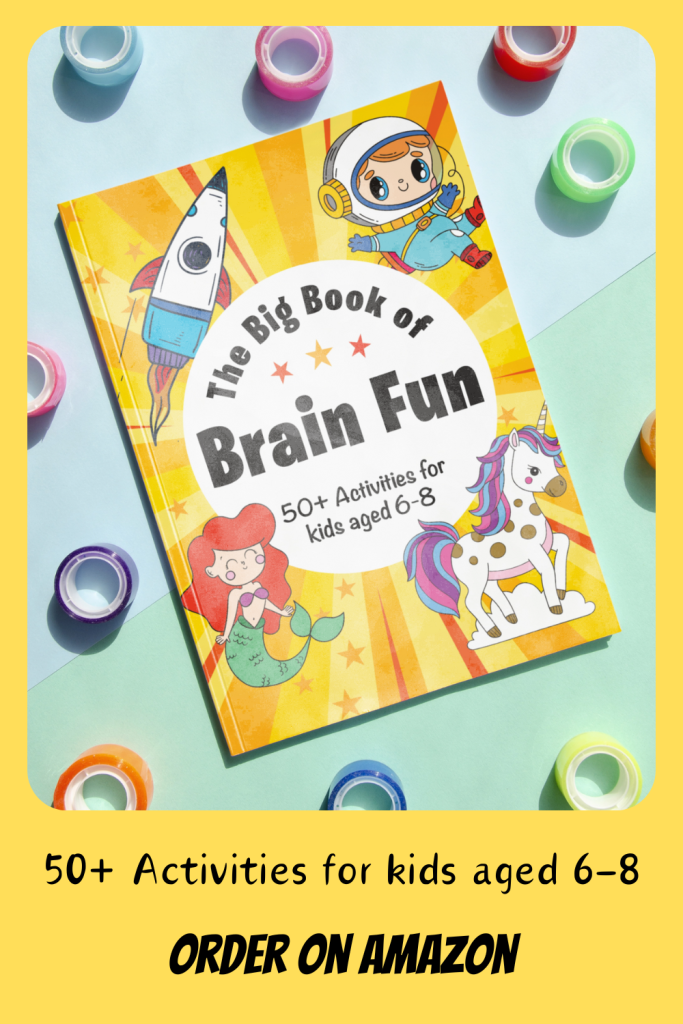Selecting the perfect gift for a child is always a thoughtful process. For children with special needs, this task takes on added significance. Each child has unique abilities, challenges, and interests. This guide aims to help you select gifts that bring joy and support the development of children with special needs.
Gift-giving is more than just a tradition; it’s a way to show love, understanding, and support. When the recipient is a child with special needs, the act of choosing a gift becomes an opportunity to celebrate their uniqueness and contribute to their growth and happiness.
What are the unique considerations when choosing gifts for children with special needs?
When shopping for a child with special needs, it’s essential to look beyond typical age recommendations on toy packaging. Special needs encompass various conditions, including physical disabilities, cognitive differences, sensory processing disorders, and developmental delays. Each requires thoughtful consideration to ensure the gift is enjoyable, beneficial, and safe.
The term “special needs” covers a broad spectrum of conditions, each presenting its own set of challenges and opportunities. A child with autism might have different needs compared to a child with Down syndrome or cerebral palsy. Understanding these differences is crucial in selecting an appropriate and meaningful gift.
Focus on the child’s abilities rather than limitations. A well-chosen gift can:
- Encourage development in challenging areas
- Provide appropriate sensory experiences
- Promote independence and self-esteem
- Facilitate social interaction and inclusion with peers
Remember, every child with special needs is an individual first. Their diagnosis is just one aspect of who they are. Their personal interests, preferences, and personality should guide your gift selection.
Key Factors to Consider
When choosing a gift for a child with special needs, several factors come into play. These considerations help ensure that the gift is not only enjoyable but also safe, developmentally appropriate, and beneficial to the child’s growth. Let’s explore these key factors in detail.
Safety
Safety is paramount when choosing gifts for any child, but requires extra attention for children with special needs. Some children may have physical limitations that make certain toys dangerous, while others might have tendencies to put objects in their mouths. Here are some important safety considerations:
- Age appropriateness: While chronological age is a starting point, developmental age is often more relevant. Consult with parents or caregivers to understand what’s appropriate. A 10-year-old with developmental delays might be more suited to toys designed for younger children.
- Material considerations: Opt for non-toxic, durable materials that can withstand rough handling if necessary. Some children with special needs may play with toys more vigorously or in unconventional ways.
- Potential choking hazards: Be particularly cautious with small parts for children who may mouth objects or have difficulty manipulating small items. This is especially important for children with certain cognitive disabilities or oral sensory seeking behaviors.
- Electrical safety: For children with physical disabilities who might use their mouths to manipulate objects, ensure any electronic toys are well-sealed and safe.
- Allergies: Some children with special needs may have allergies or sensitivities to certain materials. Always check with parents about any such concerns.
Developmental appropriateness
Matching gifts to a child’s developmental stage rather than their chronological age is crucial. This approach ensures that the gift will be both engaging and beneficial. When considering developmental appropriateness, keep these points in mind:
- Support areas where the child is showing progress: Choose gifts that build on skills the child is currently developing. This could be fine motor skills, language development, or social interaction abilities.
- Gently challenge skills they’re working on: Select toys or activities that are slightly above the child’s current skill level to provide a manageable challenge. This promotes learning and a sense of achievement.
- Align with therapeutic goals: If the child is undergoing specific therapies, consider gifts that complement these efforts. For example, a child working on speech therapy might benefit from interactive toys that encourage vocalization.
- Consider multiple developmental areas: Look for gifts that support various aspects of development – cognitive, physical, social, and emotional.
- Adaptability: Choose gifts that can be used in multiple ways or grow with the child as their skills develop.
Sensory considerations
Many children with special needs have unique sensory profiles. Some may seek out sensory input, while others might be overwhelmed by certain stimuli. Understanding and catering to these sensory needs can make a significant difference in how much a child enjoys and benefits from a gift. Consider the following sensory aspects:
- Textures: Some children may prefer soft, smooth textures, while others might enjoy varied tactile experiences. Consider toys with different textures to explore.
- Sounds: Consider volume control options and the intensity of sounds produced by toys. Some children might be sensitive to loud or sudden noises, while others might find auditory input calming or stimulating.
- Visual input: Bright, flashing lights might be exciting for some children but overwhelming for others. Consider toys with adjustable visual features or those that focus on specific visual aspects like color sorting or pattern recognition.
- Weight: Some children find heavy or weighted items calming, while others prefer lighter objects. Weighted stuffed animals or blankets can be comforting for some children with sensory processing disorders.
- Smell: Be mindful of scented toys or art supplies, as some children may have sensitivities to certain odors.
- Proprioceptive input: Toys that provide deep pressure or resistance can be beneficial for children who seek this type of sensory input.
Tip: Always prioritize the child’s individual interests and abilities over their diagnosis when choosing a gift. The best gifts are those that bring joy and support development simultaneously.
Gift Ideas by Special Need Category
While every child is unique, certain types of gifts tend to be particularly beneficial for children with specific special needs. This section provides gift ideas categorized by different types of special needs. Remember, these are general suggestions and should be tailored to the individual child’s preferences and abilities.
Gifts for children with Autism Spectrum Disorder (ASD)
Children with ASD often have unique sensory needs and may benefit from gifts that support social skills development. When choosing gifts for children with autism, consider their specific interests, sensory preferences, and any therapeutic goals they might have.
Recommended gifts include:
- Sensory toys: Fidget cubes, textured balls, or vibrating pillows can provide necessary sensory input and help with self-regulation.
- Visual schedules and organizational tools: Picture-based daily planners or visual timers can help with routine and time management, which many children with ASD find challenging.
- Social skills games: Board games that encourage turn-taking and cooperation can help develop important social interaction skills.
- Special interest-related gifts: Many children with ASD have intense interests in specific topics. Gifts related to these interests can be highly motivating and engaging.
- Noise-cancelling headphones: For children sensitive to auditory stimuli, these can provide a sense of calm in noisy environments.
- Weighted blankets: These can provide a sense of security and help with sleep issues that are common in children with ASD.
Gifts for children with physical disabilities
For children with physical disabilities, the focus should be on gifts that promote independence and adapt to the child’s physical abilities. The right gift can help a child with physical disabilities participate more fully in play and daily activities.
Consider the following:
- Adaptive toys and games: Large-button electronic toys or board games with oversized pieces can be easier to manipulate for children with fine motor challenges.
- Assistive technology: Voice-activated devices or switch-adapted toys can allow children with limited mobility to control their play independently.
- Ergonomic art supplies: Easy-grip paintbrushes or chunky crayons can make art activities more accessible and enjoyable.
- Adaptive sports equipment: Depending on the child’s interests and abilities, consider items like adaptive bicycles or basketball hoops that can be adjusted to different heights.
- Positioning aids: Cushions or supportive seating that help maintain good posture during play can be very useful.
- Reach extenders or grabber tools: These can help children with limited mobility interact with their environment more independently.
Gifts for children with cognitive disabilities
Choose gifts that are engaging but not frustrating, and that support cognitive development. The key is to find a balance between challenge and achievability to promote learning and boost confidence.
Appropriate gifts might include:
- Memory and problem-solving games: Simple puzzles or matching games can help develop cognitive skills in an enjoyable way.
- Picture books with simple text: Stories with clear, engaging illustrations can support language development and comprehension.
- Cause-and-effect toys: Pop-up toys or simple music makers help teach the concept of cause and effect.
- Sorting and categorizing toys: These can help develop organizational thinking and pattern recognition.
- Time perception aids: Visual timers or schedule boards can assist with understanding the passage of time and daily routines.
- Adaptive learning tablets: Devices with specialized apps can provide educational content tailored to the child’s cognitive level.
Gifts for children with sensory processing disorders
Children with sensory processing disorders may be over- or under-sensitive to sensory input. Gifts for these children should focus on helping them regulate their sensory experiences.
Select gifts that help regulate sensory input:
- Weighted blankets or lap pads: These provide calming deep pressure input.
- Noise-cancelling headphones: These can reduce auditory overwhelm in noisy environments.
- Tactile exploration toys: Kinetic sand, textured bean bags, or sensory bins filled with various materials can provide controlled sensory experiences.
- Light projectors or lava lamps: These can create calming visual environments for children who seek visual input.
- Chewable jewelry: For children who seek oral sensory input, these provide a safe outlet.
- Swing or rocking chair: These can provide vestibular input for children who seek movement.
Tips for Inclusive Gift-Giving
Inclusive gift-giving goes beyond simply selecting an appropriate present. It’s about creating a positive, thoughtful experience that makes the child feel valued and understood. Here are some tips to make your gift-giving more inclusive:
- Involve the child: If possible, include the child in the gift selection process. This ensures the gift aligns with their interests and preferences. It also gives them a sense of control and excitement about the gift.
- Consult experts: Parents, caregivers, or therapists can provide valuable insights into the child’s current needs and interests. They can guide you towards gifts that complement therapeutic goals or support current developmental focuses.
- Consider inclusive play: Choose gifts that can be enjoyed with siblings or peers, promoting social interaction and inclusion. Board games with simple rules, cooperative play sets, or outdoor games that can be adapted for different abilities are good options.
- Think beyond toys: Experience gifts, such as tickets to a sensory-friendly movie screening or a class in adaptive sports, can create lasting memories. These gifts also provide opportunities for the child to engage with their community and develop new skills.
- Be mindful of packaging: Some children may struggle with traditional gift wrapping. Consider easy-open packaging or gift bags. You might also include the child in the unwrapping process, making it a fun, shared experience rather than a potential frustration.
- Provide clear instructions: If the gift requires assembly or has specific usage instructions, make sure these are clear and simple. Visual instructions can be particularly helpful.
- Consider the whole family: A gift that allows for family participation can be especially meaningful. This could be a cooperative game, a kit for a family project, or an experience that everyone can enjoy together.
- Respect sensory needs: If you’re planning a gift-giving event, consider the sensory environment. A quiet space for opening gifts, subdued lighting, or a smaller gathering might be more comfortable for some children.
Adapting Traditional Gifts for Special Needs
Many popular toys can be adapted to suit children with special needs. This approach allows children to engage with mainstream toys and feel included while still having their specific needs met. Here are some ideas for adapting traditional gifts:
- Add textured stickers to game pieces for easier gripping: This can help children with fine motor difficulties manipulate game pieces more easily.
- Use rubber bands to bunch together pages of a book for easier turning: This simple adaptation can make book reading more accessible for children with limited hand mobility.
- Attach a large switch to battery-operated toys for children with limited motor control: This allows children to activate toys independently, promoting a sense of control and enjoyment.
- Modify board games: Enlarge game boards, use larger dice, or create picture-based cards to make games more accessible for children with visual or cognitive impairments.
- Adapt art supplies: Attach foam grips to pencils or paintbrushes, use easels for better positioning, or try no-spill paint cups for children with motor control issues.
- Create sensory-friendly versions of toys: Add weight to stuffed animals, remove electronic sounds from toys, or add textured elements to play sets.
Resources like the National Lekotek Center provide guides on adapting toys for various special needs. Remember, the goal is to make play more accessible and enjoyable for the child while maintaining the essence of the original toy or game.
The Importance of Experience Gifts
Experience gifts can be particularly valuable for children with special needs. These gifts offer unique opportunities for learning, social interaction, and creating lasting memories. They can also be tailored to suit the child’s specific interests and abilities.
Experience gifts offer several benefits:
- Opportunities for sensory exploration in controlled environments: Many venues now offer sensory-friendly events or can make accommodations for children with special needs.
- Chances to practice social skills in real-world settings: Experiences provide natural opportunities for interaction and communication.
- Memory-making moments for the whole family: Shared experiences can strengthen family bonds and create positive associations.
- Skill development in real-life contexts: Experiences can reinforce skills learned in therapy or educational settings.
Examples of experience gifts include:
- Memberships to sensory-friendly museums: Many science centers and children’s museums offer adapted programs for children with special needs.
- Tickets to adaptive sports events: Watching or participating in adaptive sports can be inspiring and fun.
- Enrollments in inclusive art or music classes: These classes can foster creativity and self-expression in a supportive environment.
- Animal encounters: Many zoos and farms offer special programs where children can interact with animals in a controlled setting.
- Cooking classes: Adapted cooking classes can teach life skills while providing sensory experiences and promoting independence.
When choosing an experience gift, consider the child’s interests, sensory needs, and any physical or cognitive challenges. Always communicate with the venue in advance to ensure they can accommodate the child’s specific needs.
Additional Resources
Choosing gifts for children with special needs can sometimes feel overwhelming. Fortunately, there are many resources available to help. Here are some valuable sources of information and support:
- AblePlay (www.ableplay.org): This website provides research, ratings, and reviews on toys for children with special needs. It’s an excellent resource for finding toys that are both fun and developmentally appropriate.
- National Lekotek Center (www.lekotek.org): This organization offers resources on play for children with disabilities. They provide guidance on selecting and adapting toys to make them more accessible.
- SNAP Special Needs And Parents (www.snapcharity.org): This charity provides support and information for families of children with special needs. They offer advice on various aspects of caring for a child with special needs, including play and recreation.
- Friendship Circle (www.friendshipcircle.org): This organization provides resources and support for families of individuals with special needs. They have a blog with articles on various topics, including gift ideas.
- The American Occupational Therapy Association (www.aota.org): While primarily for professionals, this site offers helpful information on selecting toys that support development and adapting activities for children with various needs.
Remember, these resources are starting points. Always combine the information you find with your knowledge of the specific child you’re buying for.
Table: Quick Reference Guide for Sensory Considerations
| Sensory Sensitivity | Gift Considerations |
|---|---|
| Tactile | Smooth textures, fidget toys, stress balls, various textured objects |
| Auditory | Noise-cancelling headphones, quiet toys, musical instruments with volume control |
| Visual | Light-up toys with adjustable brightness, books with high contrast images, calming light projectors |
| Proprioceptive | Weighted items, resistance bands, climbing toys, squeeze toys |
| Vestibular | Swings, balance boards, rocking toys, spinning seats |
| Oral | Chewable jewelry, textured oral toys, vibrating toothbrushes |
| Olfactory | Scented or unscented items based on preference, aromatherapy diffusers |
Remember: This guide is a starting point. Always consult with the child’s caregivers or therapists for personalized recommendations.
Conclusion
Choosing gifts for children with special needs is an opportunity to show care, understanding, and support for their unique journey. By considering their individual needs, interests, and abilities, you can select presents that bring joy and contribute to their development and well-being.
The most meaningful gifts are those chosen with thought, love, and a celebration of the child’s unique qualities. Whether it’s a specially adapted toy, a sensory experience, or a shared activity, your gift can make a lasting positive impact.
As you consider gift options, remember that your efforts to find the perfect gift are already a meaningful gesture. Your willingness to learn about and accommodate a child’s special needs sends a powerful message of inclusion and acceptance. This, in itself, is a gift that goes far beyond any physical present.
By approaching gift-giving with empathy, creativity, and an open mind, you can create joyful experiences and foster meaningful connections with children of all abilities. In doing so, you might discover the greatest gift of all – the opportunity to see the world through a different, equally beautiful perspective.








0 Comments